Discovering New Exoplanets: The Role of Gravitational Microlensing
Written on
Chapter 1: Understanding Gravitational Microlensing
Gravitational microlensing has emerged as the leading technique for astronomers aiming to discover exoplanets located far from Earth. Recent applications of this method have unveiled unexpected findings.
A particular instance of gravitational microlensing was utilized to identify a new exoplanet that orbits a nearby star in the Taurus constellation. This exoplanet, slightly larger than Neptune, orbits a star that is cooler than our Sun, at a distance comparable to that of Earth from its star. While gas giants are typically formed around cooler stars within this orbital zone, this discovery indicates that Neptune-sized planets could be more prevalent at such distances than previously thought.
The first detection of this exoplanet was made by amateur astronomer Tadashi Kojima from Gunma Prefecture, Japan, on November 1, 2017. Subsequent observations by global astronomers using various telescopes confirmed that this was indeed a gravitational microlensing event.
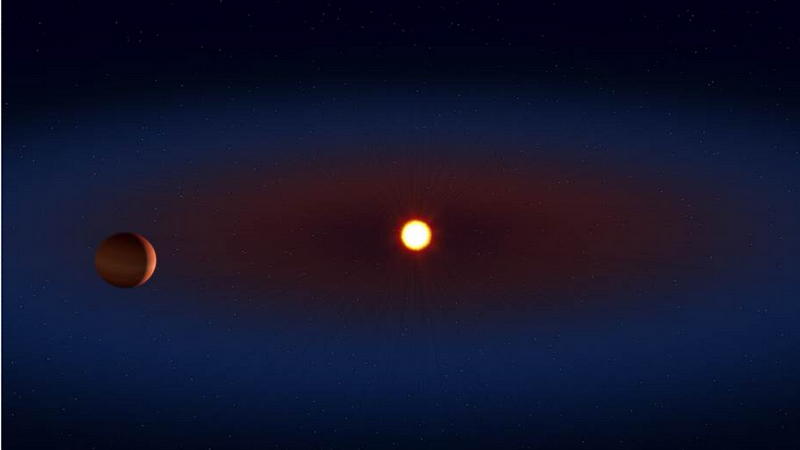
This is not the first time that exoplanets have been detected through gravitational microlensing, but past observations have often involved stars located nearer to the galactic center, where star density is high. In contrast, this particular finding occurred in a region with a much sparser star population. Because microlensing events are transient and more frequent near denser star fields, this discovery is especially noteworthy.
This exoplanetary system stands out as the closest and brightest example currently catalogued through the microlensing method, making it an excellent candidate for further investigation.
Section 1.1: The Physics Behind Gravitational Microlensing
Gravitational lensing is rooted in one of the fundamental principles of Einstein’s General Relativity, which states: "Matter tells space how to curve. Space tells matter how to move." This principle explains how mass can warp spacetime, creating what we perceive as gravity.
To visualize this, imagine a large rubber sheet stretched tight with various spherical objects placed on it. A heavy bowling ball creates a more significant dent than a lighter object like a tennis ball. If we roll a marble past this indentation, its trajectory will curve around the depression created by the bowling ball. While this analogy simplifies the concept to two dimensions, the actual distortion occurs in three dimensions.
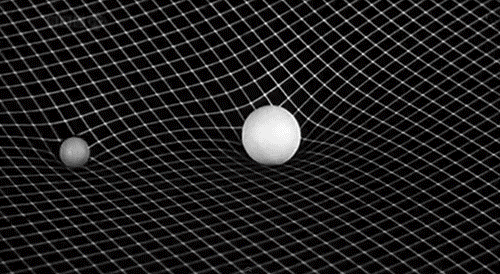
An important aspect to note is that space also influences how energy moves. As light travels in a straight line near a massive object, its path bends, causing the massive body to act like a lens. In this scenario, the larger the mass, the more pronounced the bending of light.
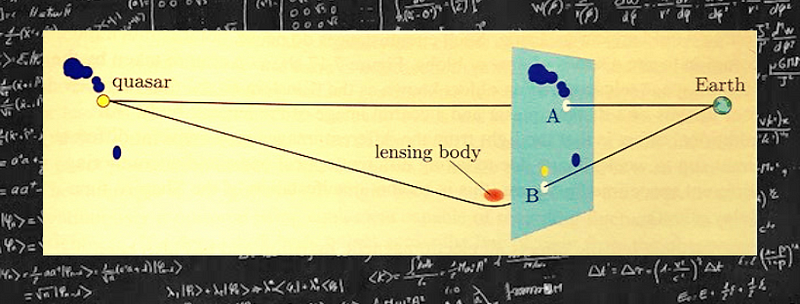
This bending effect can cause celestial objects to appear more distant than they actually are, or to reveal objects that would otherwise remain hidden. In extreme instances, the alteration in light paths can result in multiple images of the same star or galaxy appearing in the night sky, sometimes forming formations known as "Einstein rings."
We refer to this phenomenon as gravitational lensing. Microlensing involves a smaller star or body acting as a lens, which results in only slight bending of light, hence the prefix ‘micro’.
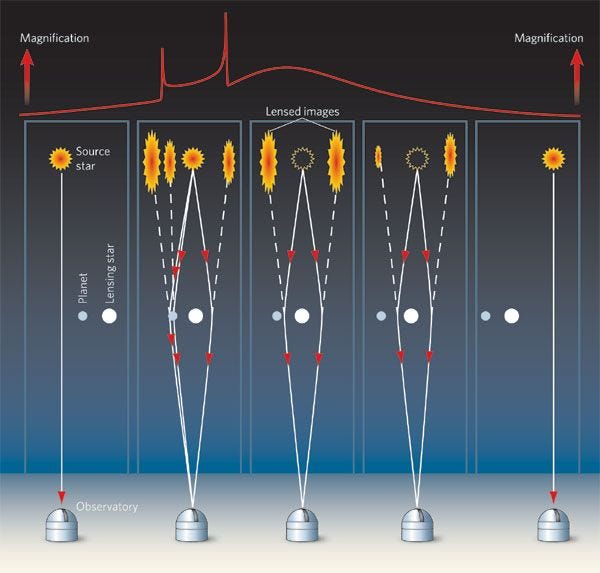
The gravitational microlensing effect occurs when a foreground star affects the light from a background star, producing two close images that brighten the total light observed. If the lensing star has a planet, astronomers might observe a secondary effect caused by the planet's gravitational influence.
When a low-mass companion, such as a planet, orbits close enough to a star, it can bend the light from that star, creating an additional image. Astronomers on Earth notice this as a brief surge in brightness, which lasts from several hours to a few days. Such brightness spikes serve as indicators of a planet's presence, allowing scientists to estimate attributes like mass and orbital distance based on the light curve's intensity and duration.
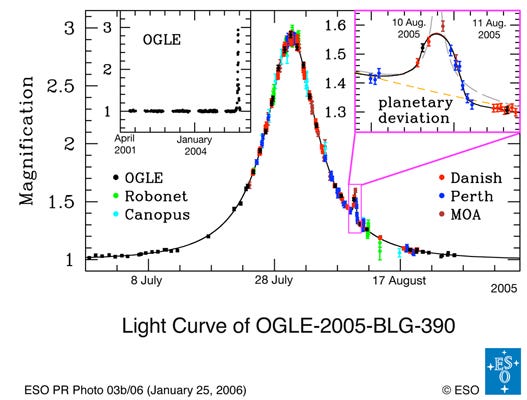
Section 1.2: The Discovery Process
In their research, Akihiko Fukui and his team at the University of Tokyo utilized telescopes at the Okayama Astrophysical Observatory and other global locations to observe this microlensing event over a span of 76 days. Their efforts enabled them to gather sufficient data to characterize the exoplanet system effectively.
The findings revealed that the host star has about half the mass of the Sun, while the exoplanet exhibits an orbit akin to that of Earth, with a mass approximately 20% greater than Neptune's.
In scenarios involving cooler stars, the regions around them are typically more conducive to gas giant formation, as this is where water can condense into ice. Current estimates suggest that the likelihood of finding a Neptune-like planet at such distances around a cooler star is just 35%. Thus, the discovery of this planet indicates that Neptune-sized exoplanets may be more prevalent in these orbits than previously believed.
Despite being an invaluable method for discovering exoplanets at vast distances, microlensing has also proven capable of revealing unexpected findings closer to home.
Chapter 2: Insightful Videos on Microlensing
The first video titled "Finding Exoplanets using Microlensing" provides an overview of how this technique is employed in exoplanet discovery.
The second video, "Exoplanet Detection: Microlensing," dives deeper into the mechanisms and implications of this fascinating discovery method.